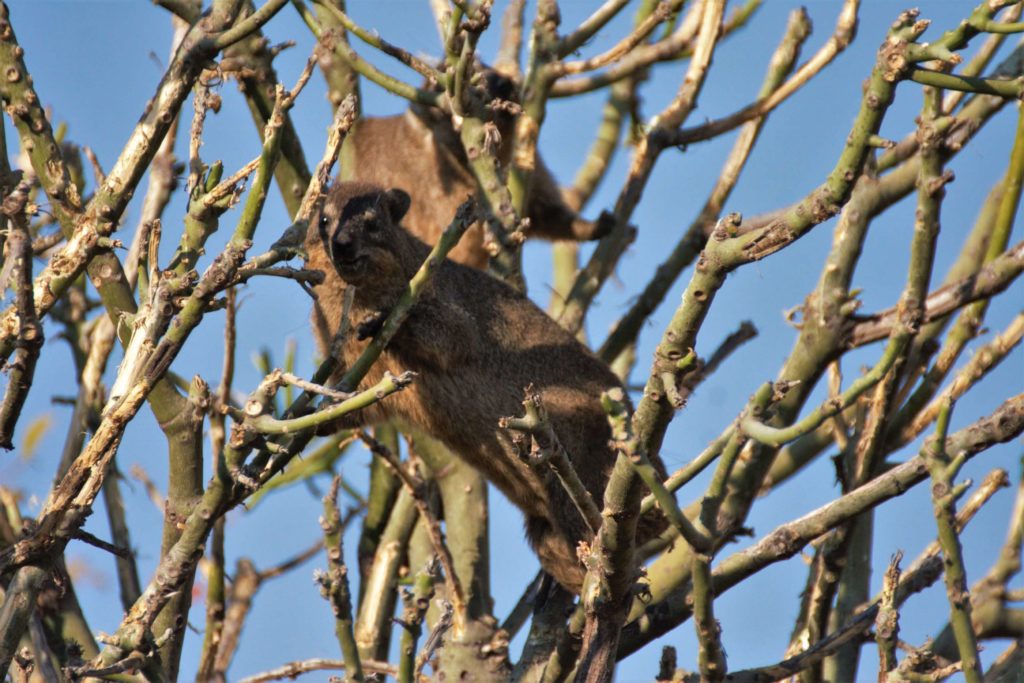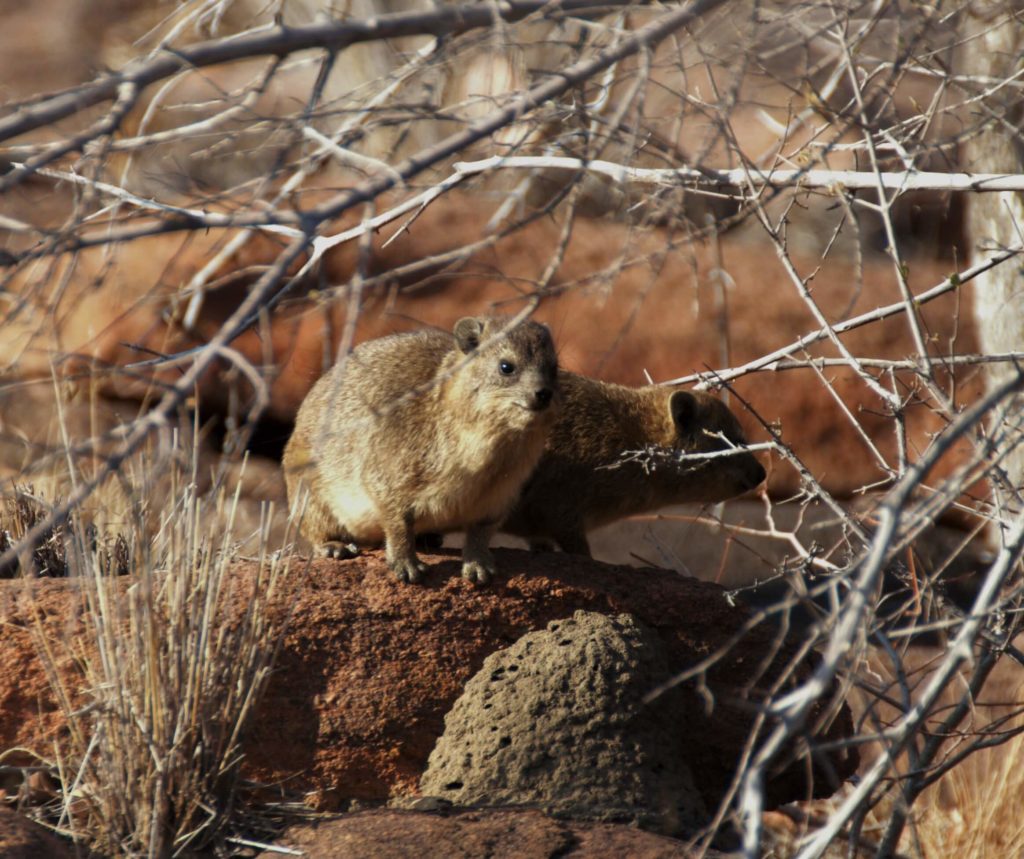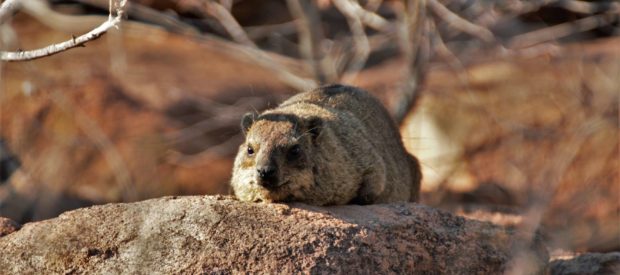Rock Hyrax or Rock Dassie – Procavia capensis
Walking around Makweti Safari Lodge during the day, one cannot miss the activity of the resident colony of little creatures living amongst and around the rocks, rooms and main lodge. This small ‘rodent-like’ animal is the Rock Dassie or Rock Hyrax.
These little mammals are nowhere close to rodents, other than in general appearance and their distant relatives’ evolutionary paths are linked to elephants and dugongs. They are unique little mammals and form the order HYRACOIDEAE within the mammal group. They have complex social structures, unique appearances, efficient daily feeding habits and digestive systems and live in well organised colonies with segregated areas for different daily activities.
The name dassie is widely used in South Africa and is linked to the Dutch word “das” or badger. They were described by early Dutch settlers to be like ‘stone badgers’ hence where the name Rock Dassie emerged. Elsewhere in Africa they are referred to as Hyrax which is linked to their scientific naming.

The Rock Dassie sp. was of considerable economic importance to African people. The meat and skins were used extensively, the latter being traded as dried skins or processed into karosses. The nature of the skin and pelage once processed was durable and long-lasting and highly sought after. Early Dutch settlers used dassies for protein and a small colony was introduced onto Robben Island, unsuccessfully due to it being hunted. Jan van Riebeck placed an embargo on the hunting of these animals in 1654, allowing the population to recover.
Some of the more significant physiological and behavioural characteristics of these animals are described below:
- They have thick hairy coats, which act as a guard coat to protect them when running around their rocky habitats
- They have long, tactile whiskers throughout their coats which allow them to navigate along dark rock crevices and tunnels
- Their feet are thick skinned and rubbery and have sweat glands, which keep them moist, improving their traction when climbing and foraging up steep rocks or trees
- They are herbivores and feed on a variety of vegetation – mostly grasses and other shrubs that grow among the rocks in the areas they live in. They consume a fair amount of woody material and are often seen climbing into trees to forage
- They have unique digestive systems for mammals, with the presence of a sac between the stomach and small intestine, that contains bacteria allowing them to break down course cellulose material. They are also able to feed on plants deemed toxic to other mammals such as the bovid species (antelope)
- They are often seen sunning themselves as their bodies cannot generate enough warmth to function in cold conditions, hence they are diurnal. When sunning, an adult female will keep watch for potential dangers
- They are preyed on mostly by Black Eagles, but fall prey to other predators such as jackals, snakes and even genets
- They have areas of their colonies that are used for different activities – sunning, foraging and even specialised latrines or toilets
- They are territorial with a dominant male having up to 17 females and 1 or 2 peripheral younger males in his colony

You will often see them just lying in the sun and will spend most of the day simply doing nothing. They will venture into the grass areas around the waterhole to feed and are seen darting for cover when disturbed. You will probably see them on the thatch rooves of the lodge, which make for great sunning while keeping an eye out for predators.
Take a closer look around when you’re next at Makweti Safari Lodge and you will see all kinds of animals busying themselves or simply just relaxing.
References:
- Personal observations on Welgevonden Game Reserve and other Southern African Reserves
- The Behaviour Guide to African Mammals, Richard Despard Estes, Russel Friedman Books CC, 1995.
- Mammals of the Southern African Sub Region, J.D Skinner & R.H.N. Smithers, Second Edition, University of Pretoria: Mammal Research Institute, Pretoria, 1990
- Field Guide to Mammals of Southern Africa, Chris & Tilde Stuart, Fourth Edition, Struik Nature, Cape Town, 2007

